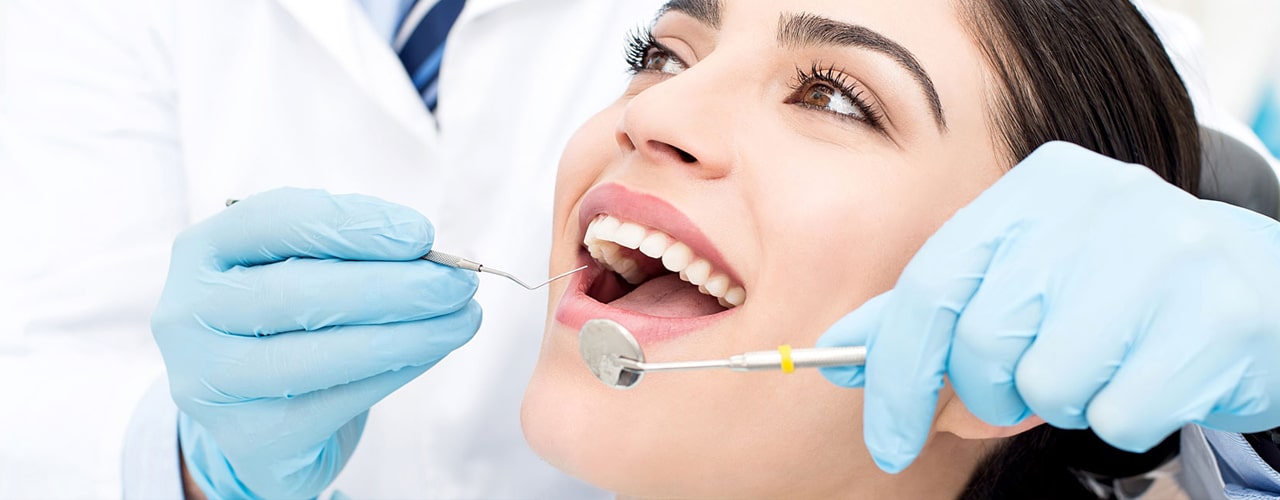Temporomandibular joint disorder, or TMJD, isn't a single disorder but a group of painful conditions affecting the jaw joint and chewing muscles. The temporomandibular joint is unique in that it's where the jaw bone connects to two points on the temporal bones. It facilitates activities like talking, chewing, clenching, and yawning.
Surrounded by muscles, nerves, arteries, cartilage, and ligaments within a capsule, the TMJ is crucial for connecting the upper skull and lower jaw through the teeth. Misalignment of the jaw can lead to a range of problems from head to back, including jaw clicking and locking, facial pain, migraines, and sleep disorders.
Our mission is to help you achieve a healthy, beautiful smile that you can be proud of. Schedule an appointment with Dr. Isha Verma at Dr. Isha Dental & Implant Centre today and take the first step towards a healthier, happier you.
- Jaw clicking/ popping
- Limited jaw opening
- Jaw locking
- Tongue-Tie
- Difficulty chewing/swallowing
- Sensitive teeth (unexplained pain)
- Abfractions of teeth
- Tinnitus or fullness in ears
- Headaches and migraines
- Neck pain
- Shoulder stiffness
- Pain behind eyes
- Facial pain
- Vertigo and dizziness
- Pain behind eyes
- Dryness and tingling eyes
- Tingling/Numbness in arms

NEUROMUSCULAR ORTHOTIC
Neuromuscular dentistry operates on the principle of correcting a patient's bite to a position where all muscle trigger points are released and muscles are in balance. In this balanced muscle position, the teeth are settled, ensuring a stable and happy occlusion. After deprogramming the muscles and then reprogramming them to this balanced position, a TMJ Orthotic is provided. This orthotic, resembling a splint given by general dentists, is designed to maintain harmony between the temporomandibular joint and its muscles.
MYOFUCTIONAL THERAPY
Myofunctional therapy focuses on correcting improper muscle function in the orofacial area. It involves exercises and techniques to strengthen and retrain the muscles of the tongue, lips, and jaw, improving functions like swallowing, chewing, and speaking. Massage techniques for TMD target the muscles surrounding the jaw joint to alleviate tension and promote relaxation.
SLEEP APPLIANCE
Sleep appliances for TMD treatment are specially designed devices worn during sleep to alleviate symptoms and improve sleep quality. These appliances are typically custom-made to fit the patient's mouth and work by repositioning the jaw to reduce strain on the temporomandibular joint and surrounding muscles. These mandibular advancement devices promote proper alignment and prevent teeth grinding or clenching during sleep. These appliances can help alleviate TMD symptoms such as jaw pain, headaches, and stiffness.
TONGUE-TIE RELEASE
Tongue-tie release is a procedure used in TMD treatment to address issues related to restricted tongue movement caused by a condition called ankyloglossia. This procedure involves cutting the frenulum, the small band of tissue that connects the tongue to the floor of the mouth, to improve tongue mobility. By releasing the tongue-tie, patients experience improvements in their ability to chew, swallow, and speak properly, which can contribute to relieving symptoms associated with TMD such as jaw tension and discomfort. Additionally, it helps promote better oral posture and reduce strain on the jaw muscles, contributing to overall TMD management.
- Improved airway and breathing
- Prevent headaches / migraine
- Prevent jaw locking
- Eliminate jaw pain
- Reduce facial muscle tension
- Prevent future injury in jaw areas
- Improved symmetry & alignment



